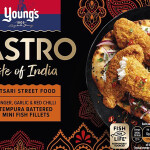Ron Volpe is the CEO and co-founder of Los Angeles, California, U.S.A.-based TraceChain, a company enabling trade compliance for regulated supply chains by creating traceability solutions for companies and governments.
Supply chains run the world, and increasingly, supply chain transparency and traceability are becoming the lever for supply chains to run the world in a cleaner, safer, and more ethical way.
Over the past decade, consumers and NGOs have become increasingly aware that how products were made, how products reached them, and the impact that supply chains were having on people and the planet did not align with their values.
These same consumers and NGOs have increasingly put pressure on the companies that they patronize to make changes, with little effect. Companies have been reluctant to act on these demands for a variety of reasons, but according to most studies, the biggest two reasons were costs and risks – costs in the sense of investing in systems to trace the “path to purchase” and risk in terms of revealing what is really going on in their supply chains and creating, in the most egregious cases, legal culpability. As ESG expert Aida Greenbury has stated, “Everything is traceable, if you want it to be.”
About five years ago, we started to see a turning point. Governments around the world began to react to the frustrations of consumers and NGOs whose demands were being unmet and started discussing the idea of regulating this unaddressed value into value chains. There have been literally hundreds of regulations proposed and implemented, virtually all of them requiring supply chain traceability for compliance over the past three years worldwide.
The E.U. Green Deal is without question the most impactful, affecting companies operating in the E.U. and companies shipping into the E.U. The Green Deal is, in my view, the most comprehensive model of this new government approach in that it includes the key enabler of identification throughout the supply chain through the Digital Product Passport system. Here in the U.S., the FSMA 204 food safety regulation issued by the U.S. Food and Drug Administrationis impacting over 400,000 companies in the U.S. alone. Again, these are just two of hundreds of regulations that go live over the coming five years. A key data point here is also that nearly 800,000 companies globally are impacted by these hundreds of regulations that require traceability, yet only 11 to 16 percent have made material progress toward compliance.
All of these companies recognize that failure to comply carries material consequences, with the E.U.’s 4 percent of turnover the most severe. The follow-on effect of this is that institutional investors are telling companies their failure to comply with regulations represents a material financial risk and will result in an exit from their portfolios of companies that cannot or will not comply.
The reaction to these regulations by industries and companies and lobbyists has been uniform across virtually all industries; delay, pushback, and stall. Fortunately, governments have largely been steadfast in holding the line on these regulations, better in the E.U. than the U.S. perhaps, but the reaction of governments has been focused on delay rather than abandoning the regulations. In summary, governments have “punched through” this failure of industries and companies to (on their own) address unfulfilled demands for new value by codifying this new value through regulations.
So, how have hundreds of thousands of companies facing an existential threat to their businesses of new regulations reacted to this wave of regulation?
Crisis is the Mother of Invention: The Whole Product Narrative
The first reaction of most industries and many companies to the wave of regulations requiring traceability was “we can’t afford to invest in traceability.” Once these same industries and companies understood these regulations were not going away, many companies dug in to understand how they might master this newly created wealth of data to their benefit and found the offsets to the cost impost were many.
There has been a steady stream of industries and companies now looking at these regulations, and more specifically traceability, in a new light, recognizing that the data being collected across all of these regulations is actually good for running their business. Planet Tracker has identified traceability could add 60 percent to global seafood profits. On an industry revenue base of USD 1.8 trillion (EUR 1.7 trillion), a 60 percent rise in profits would add USD 600 billion (EUR 553 billion) to the profit pool. The areas noted to be most positively impacted were revenue generation, recalls, waste, operational efficiencies, compliance/insurance/litigation. The study found the estimated cost to unlock this money and subsequently seafood company valuations is 1 percent of sales.
Related to the revenue opportunity, a 2023 Harvard Business Review study found "organizations that do this (sustainability) well will reap the rewards.”
“Take our findings among grocery stores as an example,” the study said. “Publix, one of the largest-volume supermarket chains in the U.S., ranks first in customer trust of 11 peer grocery brands in our TrustID dataset, with humanity and transparency scores that are 75 percent and 47 percent higher than the number-two player, respectively. This difference is even more pronounced with Gen Z and millennial customers, who score Publix as 83 percent and 95 percent higher than the number-two player, respectively. As a result, trusting customers are 54 percent more likely to purchase from Publix than from competitors. And this is even more pronounced with Gen Z and millennial customers, who are 162 percent more likely to purchase from Publix than from competitors."
Traceability in seafood involves the entire supply chain – factory trawlers in the wild-caught space or from aquaculture facilities for farmed seafood – and increasingly involves all aspects of the value chain as well; for example, trawler emissions, pharmaceuticals, feed used in aquaculture operations, packaging, and wages paid to employees for example. Traceability in seafood has also begun to be seen as a process that has the potential to streamline data collection for seafood companies focused on both regulation and certification – for instance, the FDA FSMA rule, Marine Stewardship Council, Aquaculture Stewardship Councill, local regulations for products farmed or caught internationally and shipped to the U.S. for consumption. A whole book could be written on the topic of the proliferation of standards in the seafood space globally, but the headline here is about the value of a single engine that can collect multiple data points in parallel.
Traceability in Seafood
Lastly is the topic of seafood in comparison to other industries in the traceability space. From my perspective, while seafood undoubtedly benefits from inclusion in regulations that include many verticals (e.g., EUDR and FSMA), seafood also seems to benefit from being a category that consumers are focused on more than others. Consumers are very aware of the impact overfishing has on the environment and are well-read on the topic of mislabeling in seafood. The dynamic seems to be that for many years seafood has been a “healthy” alternative to other protein groups, and recent publicity around quality and labeling issues seems to have generated an overweighted response from consumers demanding a “cleaner” supply chain, which in turn is pushing the industry in a positive direction.
Traceability is without question one of the hottest supply chain trends in the world today, and related regulations are enabling the injection of new value into value chains that people and planet need desperately. From a food perspective, seafood arguably has taken a lead role in thinking about this in a “whole product” way, looking at the entire value chain rather than simply linear movement of goods. In doing so, the seafood industry has taken steps to create a model that delivers what consumers want and at the same time leveraging the data collection process to run better supply chains and better overall enterprises. While the percentage of seafood companies investing in traceability is small, it is growing and it is accelerating faster than in other sectors.







